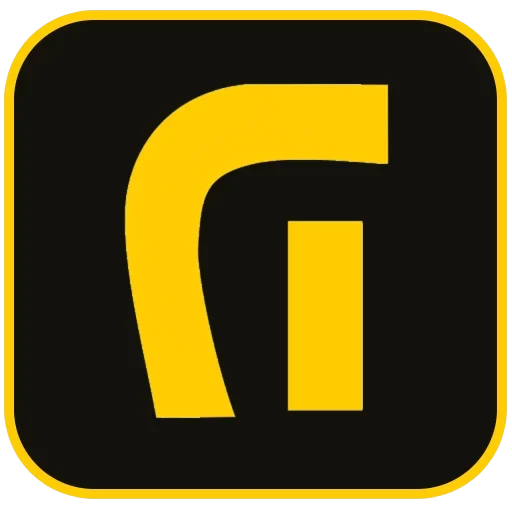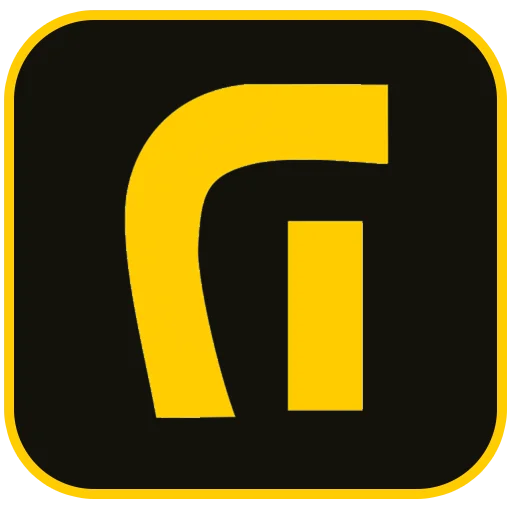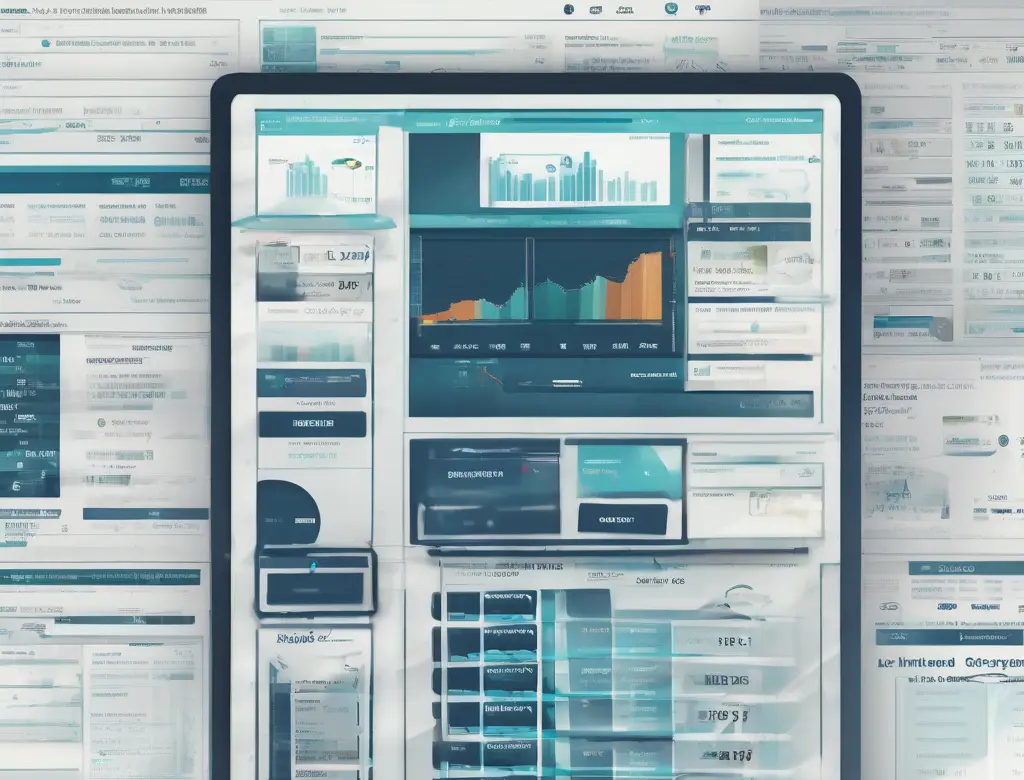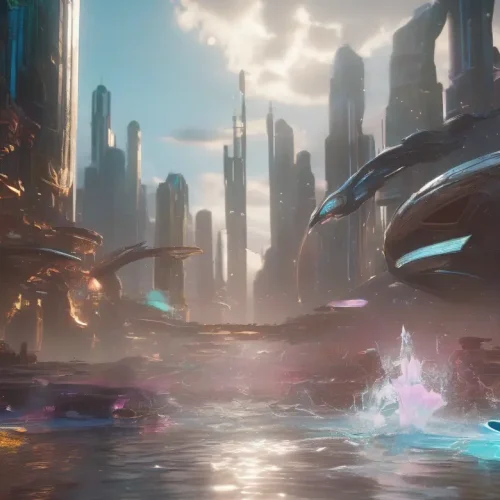The Importance of Powerful E-commerce Website Design in the Digital Age
In today’s global market, an online presence is no longer a luxury but a necessity for any business. However, for brands focused on selling products or services directly, simply having a website is insufficient; they require an **E-commerce website design** equipped with the capabilities and features of a truly powerful, professional online store. A robust online store is not just a product catalog; it is a machine that generates revenue 24/7, enhances the customer experience, and provides limitless scalability.
At Asa Rad, we focus on e-commerce principles, delivering designs that are not only visually appealing but also technically optimized and scalable. If you are looking for a platform that can handle high traffic volumes and thousands of products, this guide is your comprehensive resource.
To initiate your professional project, we recommend exploring Asa Rad’s dedicated Shopping Website packages.
Three Core Pillars of a Powerful Online Store
A successful online store rests on three main pillars: technical infrastructure, user experience (UX), and growth/marketing tools. Neglecting any of these sections can lead to project failure.
Technical Infrastructure: Speed, Security, and Stability
Website speed is the first factor influencing user interaction and search engine rankings. Users expect pages to load in under three seconds. To achieve this, using high-performance Hosting services, e-commerce optimized servers (like LiteSpeed), and Content Delivery Networks (CDNs) is essential.
High Security and Customer Trust (H3)
Security is critical for e-commerce sites, which handle sensitive financial and personal data. Installing an SSL certificate, employing advanced encryption, and adhering to PCI DSS standards for payment processing are mandatory. Furthermore, the system must be resilient against cyber attacks like DDoS and SQL injection. For enhancing your website’s security, consider Asa Rad’s professional solutions.
Responsive Design and Mobile-First Approach (H3)
Over 70% of online purchases are now made via mobile devices. Therefore, the **E-commerce website design** must be fully responsive, ensuring flawless performance and appearance across every screen size. A ‘Mobile-First’ design approach not only improves user experience but is also a key ranking factor for Google.
Key Features in Product Management and Catalog
The heart of any store is its products. The way this information is displayed, organized, and managed directly impacts the conversion rate.
Comprehensive Product Management System (H3)
A powerful store must be able to manage various product types, including physical, virtual, downloadable, or subscription-based items. Key features include:
- **Inventory Management:** Automatic stock updates, low-stock alerts, and integration capabilities with warehouse systems (ERP).
- **Product Variation:** Ability to define attributes such as color, size, model, and different prices for each variation.
- **High-Quality Gallery and Video:** Capability to upload multiple images, high-resolution zoom, and display product videos.
- **Reviews and Rating System:** User review system that builds trust and boosts site SEO.
Advanced Search and Smart Filtering (H3)
Customers must be able to find their desired product in the shortest time possible. Necessary capabilities include:
- **Live Search:** Displaying suggested results as the user types.
- **Dynamic Filters:** The ability to filter based on price, brand, color, technical specifications, and stock status.
- **Professional Sorting:** Options to sort results by popularity, best sellers, newest items, and price.
Optimizing the Buying Journey: From Cart to Checkout
Complexity in the buying steps is one of the main reasons for shopping cart abandonment. A successful **E-commerce website design** simplifies the purchasing process as much as possible.
Smart Shopping Cart and Fast Checkout (H3)
The Cart and Checkout pages must have minimal friction. These features are essential:
- **One-Page Checkout:** Collecting all necessary information on a single page.
- **Guest Checkout:** Allowing users to complete purchases without mandatory registration.
- **Accurate Hidden Cost Calculation:** Transparent display of shipping costs, taxes, and discounts before final payment.
- **Abandoned Cart Recovery:** Sending reminders via email or SMS to users who left their purchase incomplete.
Diverse Payment Gateways and Shipping Management (H3)
Offering multiple payment options enhances your store’s credibility. Integration with local and international gateways, Cash on Delivery (COD) options, and electronic wallet connectivity is necessary. Furthermore, the system must integrate with shipping carriers to calculate delivery time and cost based on the user’s destination.
User-Centric Features: Profile and Personalized Experience
Powerful stores convert visitors into loyal customers through advanced user accounts and personalization.
Advanced User Account and Order History (H3)
The customer’s My account panel is the hub of their interaction with the store. Key features:
- **Order Tracking:** Real-time display of order status (processing, shipped, delivered).
- **Purchase History:** Access to past invoices and orders.
- **Wishlist:** The ability to save products for future purchases.
- **Address and Personal Info Management:** Easy updates to the profile and shipping addresses.
Personalization and Product Recommendations (H3)
Using AI algorithms to analyze user behavior and provide relevant product recommendations (‘Customers who bought this product also bought the following’) dramatically increases conversion rates.
Marketing, SEO, and Store Growth Features
A powerful store must include internal tools for customer acquisition, retention, and encouragement.
Technical and Content SEO for Online Stores (H3)
Without SEO, even the best store will go unseen. **E-commerce website design** must be implemented from the outset with a search engine optimized structure. This includes:
- **Structured URLs:** Using product and category names in page addresses.
- **Comprehensive Content Creation:** Building strong category pages and an active blog section.
- **Schema Markup:** Optimizing structured data to display reviews, prices, and stock in Google’s search results.
- **Speed Optimization:** As mentioned earlier, this is directly linked to Site Optimization.
Discount Tools, Loyalty, and Email Marketing (H3)
The ability to define various discount codes (percentage, fixed amount, based on minimum purchase), gift vouchers, and loyalty programs (points for purchases) is crucial for encouraging repeat business. Integration with email marketing services for promotional campaigns and notifications is also necessary.
Reporting and Data Analytics (H3)
The store must be natively connected to powerful analytics tools like Google Analytics. The ability to understand these statistics—including conversion rates, cart abandonment rates, most viewed products, and user behavior—helps managers make data-driven decisions.
Admin Panel and Store Scalability
The admin panel (backend) should be as important as the user experience (frontend). The panel must be intuitive, efficient, and include the following capabilities:
- **Centralized Order Management:** System for filtering and searching orders, easy status changes, and invoice generation.
- **Multivendor Management:** If needed, the system should have the capability to evolve into a multivendor platform (like Amazon).
- **Regular Backups:** Having an automated daily or weekly backup plan to prevent data loss.
Why Choose Asa Rad for Your E-commerce Website Design?
E-commerce website design is a long-term investment that requires expertise and a commercial perspective. At Asa Rad, we go beyond mere coding. By providing a completely bespoke and optimized Web Design, we ensure that your store encompasses all the features of a powerful online store.
- Expert Consultation: From domain and hosting selection to SEO strategies.
- Exceptional UX/UI Design: Focus on increasing conversion rates and reducing user friction.
- 24/7 Technical Support: Ensuring the uninterrupted performance of your store.
To start your business growth journey in the world of e-commerce, simply contact us or initiate your Website Design Contract.
Sources:
- https://asaradco.com/web-design/shopping-website/
- https://asaradco.com/web-design/
- https://asaradco.com/site-optimazation/
- https://asaradco.com/hosting/
- https://asaradco.com/my-account/
- https://asaradco.com/cart/
- https://asaradco.com/checkout/
- https://asaradco.com/non-present-contract/website-design-contract/
External References:
- Avadis Net: Website Design for E-commerce – Comprehensive review of the technical and aesthetic features required for a successful online store, including responsiveness and speed.
- Websoltan: E-commerce Website Design Services – Introducing key capabilities such as professional admin panel, advanced search, and payment and shipping systems in online stores.
- Portal.ir: Comprehensive Guide to Website Design – Emphasizing the importance of choosing the right structure (CMS or custom) and the role of SEO and content in attracting customers for online sales.
- MihanWP: How to Build a Site – Underscoring the benefits of 24-hour availability, enhanced brand trust, and user behavior tracking and analytics capabilities in the online space.
Sources for reference only, all content is original.
Frequently Asked Questions
What is E-commerce Website Design?
E-commerce website design is the process of creating an online platform that allows businesses to sell their products and services directly to customers. This involves designing the UI/UX, integrating payment gateways, inventory management systems, and SEO tools to ensure all the features of a powerful store are present. Its success relies heavily on technical foundation and ease of use.
What are the most crucial features of a powerful store for increasing sales?
The most crucial features include extremely fast loading speed, responsive (mobile-first) design, a simple and quick checkout process, high security (SSL), and internal marketing systems (like discount codes and abandoned cart recovery emails). These capabilities directly influence the Conversion Rate and maximize sales performance.
Why is site speed critical for online stores?
Site speed directly affects user experience and SEO ranking. Statistics show that every second delay in loading can reduce the conversion rate by up to 7% and increase the bounce rate. A powerful store must use optimized hosting and advanced caching techniques to ensure fast and consistent loading.
What does responsive design mean in E-commerce website design?
Responsive design means the website’s layout and content automatically adjust to the screen size of the user’s device (mobile, tablet, or desktop). This feature is vital for stores because the majority of traffic and purchases today occur on smartphones, and ignoring it leads to losing a significant portion of customers.
How can the security of an e-commerce site be guaranteed?
Guaranteeing security involves several layers of defense: installing a valid SSL certificate, using strong passwords, regularly updating the CMS and plugins, deploying Web Application Firewalls (WAFs), and adhering to standards required for protecting customer payment information. These measures boost customer trust in using their My account.
What is the role of SEO in the success of an online store?
SEO (Search Engine Optimization) is one of the main pillars of successful sales. SEO ensures your products are visible in relevant Google searches, attracting free, targeted traffic. A powerful store must have optimized URLs, a logical categorization structure, and comprehensive content creation for products and categories.
Should an online store have a review and rating system?
Yes, a user review system is essential. Customer reviews generate social proof and directly increase the conversion rate. Moreover, User-Generated Content (UGC) is free and highly valuable for search engines in terms of SEO, as it enriches product pages.
What is the difference between an e-commerce site and a corporate site?
A Corporate Website is primarily designed to introduce the company’s identity, services, and history, aiming to build credibility. In contrast, an E-commerce site is focused on sales and transactions, including features like product catalogs, a shopping Cart, payment gateways, and order management systems.






